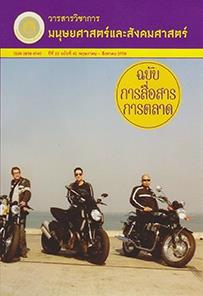ทะเลและผีเสื้อ: การนำเสนอภาพตัวแทนใหม่ ของสังคมเกาหลีร่วมสมัยในวงวรรณกรรมไทย Tha Ley Lae Phi Sue (바다와 나비): New Representation of Korean Contemporary Society in Thai Literary Circle
Main Article Content
บทคัดย่อ
จากการศึกษาพบว่า รวมเรื่องสั้นชุด ทะเลและผีเสื้อ ได้นำเสนอภาพตัวแทนใหม่ของสังคมเกาหลีร่วมสมัยในวงวรรณกรรมไทย ได้แก่ 1) ภาพของสังคมหลังสงครามเกาหลีที่มีปัญหาแฝงเร้น ทับซ้อน 2) ภาพโศกนาฏกรรมของชนชั้นล่างและชนชั้นกลางกับการพัฒนาเศรษฐกิจและสังคม 3) ภาพพลวัตของสังคมที่ให้ความสนใจกับปัญหาส่วนรวมมาสู่การสนใจปัญหาระดับปัจเจก 4) ภาพของคนร่วมสมัยกับการค้นหาอัตลักษณ์ในโลกยุคโลกาภิวัตน์ การนำเสนอภาพตัวแทนผ่านเรื่องสั้นชุดนี้ นับเป็นสะพานเชื่อมโยงให้มนุษย์จากทั้งสองประเทศได้ใช้ใจสัมผัสซึ่งกันและกัน นำไปสู่ความเข้าใจอันดีระหว่างกันได้มากกว่าการนำเสนอเฉพาะภาพที่สวยงามเพียงด้านเดียว
Sea and Butterfly (바다와 나비) is an anthology of Thai translation of Korean short stories, edited by Korean Literature Translation Institute(KLTI)collaborating with Korean Studies Center, Burapha University, and published by ‘nanmeebooksANOVEL’. The anthology was debuted in Thailand in August in 2008. All short stories in this book were well-structured and full of literary techniques, unlike previous translated Korean literature distributed in Thailand. Therefore, this anthology has given the new representation of Korean contemporary society in Thai people’s perception.
Formerly the representation of Korean society was perceived through history, and art and culture products, representing the agricultural or rural society where Korean people wear the traditional costume, Hanbok. After the Korean Wave in Thailand in 2002, the representation of Korean society was changed to the extravagant modern and romance society. This image was reproduced and reflected through romantic Korean literature translated into Thai.
The present study suggested that the anthology Sea and Butterfly represents 1) new Korean society after the war which has been having hidden and overlapping problems; 2) the tragedies of low and middle classes resulted from economic and social development policies; 3) social dynamics where Korean people deviate their focus from public problems to individual ones; and 4) contemporary people who search for their identity in the globalised society. The representation conveyed in the anthology bridges the hearts of people between the two countries and leads to their better understanding rather than the perception of one-sided good images previous represented.
Downloads
Article Details
บทความทุกบทความเป็นลิขสิทธิ์ของวารสารวิชาการมนุษยศาสตร์และสังคมศาสตร์ มหาวิทยาลัยบูรพาเท่านั้น


